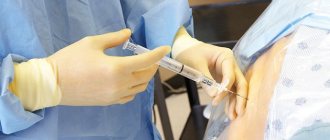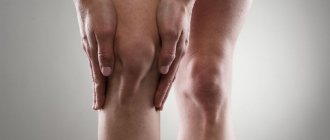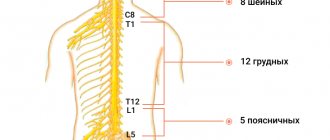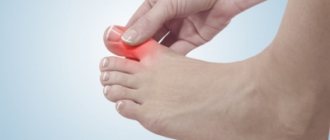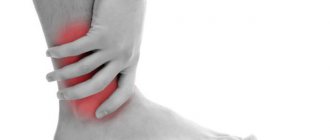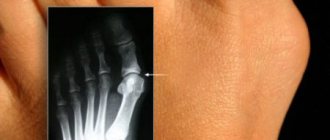Women's ankles swell during pregnancy, after long walks, wearing high-heeled shoes, before menstruation, but normally swelling occurs periodically, there is no heaviness or pain in the legs.
If they are frequent, then you need to look for the cause; with unilateral edema, it could be trauma, arthritis, rheumatic diseases, blockage of a vein by a blood clot, infections of the skin and subcutaneous tissue. If the swelling of the right and left ankle is the same, varicose veins, lymph congestion, heart disease, and kidney disease should be excluded.
To find the cause, they consult a surgeon, a therapist, and are prescribed vascular ultrasound with Dopplerography, X-rays, ECG, urine and blood tests, and ultrasound of the kidneys. For symptomatic relief, compresses, contrast showers, and elevating the legs are used. For venous edema, Detralex tablets and Lyoton gel are prescribed. For arthritis, Diclofenac is indicated; soft tissue infections are treated with antibiotics. They are supplemented with physiotherapy (ultrasound, magnetic therapy), massage.
Why do the legs and ankles swell in women without diseases?
If the legs swell in the ankles (ankle area), then in women they can be caused by the following reasons:
- overweight;
- low physical activity;
- abuse of table salt;
- improper drinking regime - lack of water thickens the blood and impedes its movement, excess can take a long time to be eliminated from the body;
- pregnancy;
- period before menstruation;
- drinking alcoholic beverages;
- flat feet;
- compression of the foot by shoes, high heels;
- long walking;
- standing or sedentary work, long air travel;
- hot weather;
- power loads, carrying weights.
Most of these factors cause stagnation of blood in the venous network, and weak venous tone makes it impossible to remove it. Therefore, the liquid part from the vascular bed passes into the ankle tissue. If there is no serious illness, then swelling rarely appears, movements are not difficult, the skin is of normal color. If your ankles often swell and hurt in the evening, then an examination is always necessary.
Medicines that cause swelling
Medications used regularly can increase ankle swelling:
- vasodilators (for example, Corinfar, Nitroglycerin);
- hormonal: for the treatment of menopause (Klimen, Femoston), contraceptives (Mersilon, Zhanine), corticosteroids (Prednisolone, Dexamethasone);
- antidepressants (Fluoxetine, Anafranil);
- painkillers and anti-inflammatory drugs (Naproxen, Diclofenac);
- anti-cold medications (Prostudox, Vicks active);
- for epilepsy (Pregabalin, Finlepsin);
- antiarrhythmics (Cordarone, Sotalol);
- for the treatment of diabetes mellitus (Avandia, Januvia, Ongliza).
In addition to the listed drugs, swelling is also provoked by the use of their analogues.
Serious causes of swelling of the legs and ankles in women
For the appearance of leg swelling in women, one of the reasons is enough - heart disease, kidney disease, liver disease, varicose veins, lymphatic insufficiency, blockage of a vessel with a blood clot, trauma, diabetic neuropathy, inflammation of the joints, soft tissues. Some of them occur simultaneously, for example, venous and lymphatic stagnation. There are differences in diseases that provoke unilateral and bilateral edema.
If right or left
Swelling of the right or left ankle occurs due to injury, inflammation of the joint, rheumatic diseases, thrombosis, soft tissue infections, and diabetes.
Injury
The ankle joint is most often injured when the leg is twisted, bruised, jumping, or falling.
The injury is accompanied by severe pain, which then subsides, and swelling can persist for a long period of time.
It is very important to take into account that in women, after the onset of menopause, the bones lose density (osteoporosis), then pain during fractures is moderate, and swelling becomes the main symptom.
Inflammation
Arthritis of the ankle and surrounding tissues is characterized by local or widespread swelling and pain when walking. Inflammation is caused by bacteria and viruses, typically affecting the ankles with measles, tuberculosis, gonorrhea, and brucellosis.
Also, pain and swelling due to the inflammatory process can be associated with joint overload due to obesity, walking in heels, flat feet, or playing professional sports. This type of arthritis is called aseptic. The severity of swelling is directly related to the activity of inflammation.
Rheumatism and other autoimmune diseases
In a young woman, rheumatoid arthritis can begin with swelling of the ankle. It is accompanied by aching pain that intensifies at rest, stiffness of movement in the morning, and about an hour after physical activity the pain subsides. Joint damage due to the formation of immune complexes is typical for:
- psoriatic arthritis – there is swelling and soreness, cyanosis of the skin, plaques are found in the scalp, the nails have indentations, are thinned, and peel off from the nail bed;
- infectious arthritis - develops after chlamydia, mycoplasma infection, swelling and pain intensify and subside in waves, at the same time inflammation of the mucous membranes of the eyes and urinary tract occurs (conjunctivitis, urethritis);
- inflammation of the intestines (nonspecific ulcerative colitis, chronic enteritis) - the ankle and periarticular tissues are affected during an exacerbation of intestinal disease, the pain is aching, moderate, swelling mainly occurs on the outer surface of the joint.
Thrombosis
When a vein is blocked by a blood clot in the lower leg, the outflow of blood from the foot is disrupted; this manifests itself in the form of sudden one-sided swelling, bursting pain, redness with a bluish tint, and an increase in local temperature. Thrombosis can be triggered by injury, infection, bed rest, surgery, childbirth, the use of birth control pills, smoking, and tumors.
Soft tissue infections
Swelling near the ankles is caused by skin infections; it may develop against the background of erysipelas, phlegmon, or local suppuration. Most often it occurs after an injury, wound, or skin abrasion, but microbes can also enter through the lymphatic and circulatory system from other foci of acute inflammation.
Typically increased body temperature, severe weakness, tugging or burning pain in the leg.
Diabetic foot
With long-term diabetes, the function of nerve fibers (neuropathy) and the nutrition of bone tissue (osteopathy) are impaired. Swelling of the ankle in a diabetic is accompanied by decreased sensitivity and muscle weakness; a distinctive feature is mild pain when walking and pressing on the joint in the early stages. In the future, movements become difficult, trophic complications develop (ulcers, skin cracks), and in the later stages it is impossible to stand on the foot due to pain. The second leg is also affected, but usually on one side the changes are more pronounced.
Allergy
Most often, allergic swelling on the foot occurs after an insect bite, but in the summer, contact with plants (hogweed, rue, nettle) is also possible. It is characterized by rapid growth, burning, itching, and rashes.
Symptoms
You can determine the swelling of the ankle yourself, just press the pad of your finger on the problem area; if the result is a small dent that does not go away for a while, then your left or right leg is swollen.
Associated symptoms of edema are:
- Heaviness in the feet
- Painful sensations
- Light burning sensation.
The swelling can be local or cover a fairly large area along the entire height of the right or left leg.
If both legs are swollen
If both legs are swollen, then this is a sign of a systemic (general) disease; the cause is venous, lymphatic, cardiac and renal edema.
Venous
In the vast majority of cases, venous edema in women is associated with varicose veins, since female hormones reduce the tone of the venous walls, the lumen expands, and blood accumulates in the feet, and then in the lower legs.
Often the first manifestations occur during pregnancy, after injury, leg surgery, or prolonged bed rest. There is also a congenital tendency to edema due to insufficient development of the valvular apparatus of the veins.
Venous edema is characterized by:
- appears in the evening, disappears in the morning (then becomes permanent);
- the first symptoms are heaviness, fatigue;
- both limbs are equally affected or one has a slightly larger volume;
- the skin is pale, a bluish tint is possible;
- there is a small visible network of blood vessels (stars, mesh);
- When pressed there is a hole, the elastic of the socks leaves a mark.
Lymphatic
Lymphatic edema in the ankle area is associated with changes in the composition of lymph; it occurs with diseases of the kidneys, heart, veins, liver, tumors, long-term inflammation, infections, and possibly a congenital disorder of lymph flow. Swelling occurs in the evening and is aggravated by physical activity and a sedentary lifestyle, sitting or standing.
Initially, the swelling disappears after rest, and then becomes dense. The skin is not folded, it is stretched tightly. Characterized by heaviness in the legs and cramps. If the process is advanced, then the limb loses its outline (elephantiasis), movements in it are difficult, trophic ulcers and eczema appear.
Cardiac edema
Swelling in the legs due to weakness of the heart muscle is completely symmetrical, while with diseases of the veins and lymphatic vessels, there is usually more swelling on one side. They appear in the evening, are soft, the skin over them is pale, cold, pressure leaves a hole.
In patients with cardiac edema, there is shortness of breath with little physical activity and in a lying position, palpitations, pain in the heart area, behind the sternum, heaviness in the right hypochondrium.
Renal
Renal edema, as a rule, grows quickly, first the eyes swell in the morning, then swelling of the legs occurs, and when lying down there is swelling of the lower back. They have a pasty consistency, the skin above them is pale and dry. It manifests itself as pain in the lumbar region, headache, and high blood pressure.
Causes of unilateral edema
So, why might swelling occur in the right leg or the left? The most common reasons for swelling of one leg in the ankle area are:
- Trauma to the lower limb (bruise, fracture). Strong mechanical stress can lead to muscle rupture, tissue and bone damage. As a result of the injury, depending on the severity, the ankle quickly begins to swell and hurt.
- Diseases of the venous system of the lower extremities. Vein thrombosis and varicose veins lead to the formation of swelling and pain in the legs. This swelling is persistent and dense, and significantly increases as a result of prolonged vertical position of the limbs. After keeping the legs in a horizontal position, the swelling decreases. Ignoring swelling leads to thrombophlebitis.
- If an infection develops in an open wound on the leg, the ankle will become swollen and painful.
- Unilateral edema can be caused by pathological diseases of the osteoarticular system. Arthritis, Osteoarthritis, Gout are characterized by swelling of the ankle in the area of the affected joint, bone, accompanied by a local increase in temperature, redness of the skin, and pain.
- An insect bite leads to an allergic reaction, and as a result, the formation of swelling in the affected area. In this case, swelling of the ankle of the left or right leg is an allergy to a substance in the insect's saliva.
- Disturbances in the functioning of the lymphatic system of the extremities. They are characterized by pain, weakness, a feeling of fullness, heaviness in the affected limb, and limited joint mobility. The skin in the affected area is pale, the skin fold is thickened.
- Uncomfortable tight shoes cause discomfort, lead to the appearance of blisters, corns, and ankle swelling.
Read also: Swelling of the arms and legs in cancer patients
In women, swelling of the legs often occurs during pregnancy, however, in most cases the swelling affects both limbs.
Diagnosis options for a swollen ankle
To correctly diagnose a woman with a swollen ankle, the following is prescribed:
- X-ray of the ankle joint;
- Ultrasound of the vessels of the lower extremities with Dopplerography, it shows the speed of blood flow and the presence of obstacles;
- ECG to detect heart disease;
- Kidney ultrasound, urine tests;
- blood tests - general, biochemistry, coagulogram (clotting), glucose, for infections, electrolytes, hormones (according to indications).
You need to start the examination with a surgeon and therapist; if necessary, they will refer you to a cardiologist, vascular surgeon, nephrologist, or endocrinologist.
Diagnosis of causes
If your legs are constantly swelling, you cannot do without medical help. Typically, examinations are aimed at identifying the cause of fluid retention. Appointed:
- blood and urine tests;
- Ultrasound of leg vessels;
- Ultrasound of abdominal organs and vessels;
- heart examination - ECG and echocardiography.
How to treat swelling of ankles, feet
If swelling of the ankle and foot occurs outside of disease, then you can get by with folk remedies, compresses, contrast showers, and external medications. For diseases, medications of different groups, physical procedures, including massage, and reflexology are used.
What to do at home
If the ankle swells due to injury, you need to elevate the leg, apply ice, and bandage it with an elastic bandage. Without medications, you can treat edema that occurs outside of diseases, then you can use folk remedies.
Contrasting temperature baths
To carry out foot baths, 30 g of a mixture of plantain leaf and mint in equal proportions is poured into 1 liter of water, boiled for 15 minutes and filtered. Pour hot water (45 degrees) into one bowl, cold water (20 degrees) into another, and add 500 ml of decoction to each. One by one, lower your legs into the water, the duration is determined by sensations.
At first, it is enough to make 2-4 temperature changes; discomfort should not be allowed. After this, the feet are dried and placed on a hill. A contrast shower has a similar effect.
Compress with essential oils
Cotton fabric is dipped in cool water, to which sage, eucalyptus, and mint oils are added. Take only 5 drops per glass of water in any ratio. To improve dissolution, oils must first be mixed with a teaspoon of salt (regular or sea). The ankle is wrapped in cloth for half an hour.
In the same way, make a compress with apple cider vinegar, half diluted with water, add 2 drops of mint oil to a glass of solution.
Herbal teas
To naturally remove excess fluid, teas from medicinal plants are used; they are brewed at the rate of a teaspoon of crushed plant per glass of boiling water, and infused for 15 minutes. The most effective are considered:
- parsley leaf,
- horsetail grass,
- willow bark,
- raspberry leaf,
- chestnut flowers.
You need to take two to three cups of tea per day.
Cabbage leaf
The cabbage is disassembled into leaves and placed in the refrigerator for 15 minutes, applied for 30 minutes, fixed with a regular or mesh bandage, and kept for 30 minutes. You can do 3-4 such procedures per day.
How to treat with drugs
Since swelling of the ankles in women is associated with diseases of various origins, medications are used depending on the diagnosis:
- varicose veins - venotonics in tablets (Phlebodia, Detralex), ointments (Troxevasin, Lyoton);
- thrombosis - Heparin locally and in injections, then Warfarin;
- lymph stagnation - venotonics (Aescusan), enzymes (Wobenzym), diuretics (Furosemide), to improve blood flow (Trental, Curantil);
- arthritis - anti-inflammatory (Diclofenac tablets and gel), Revmoxicam (injections, tablets), Fastum gel, Dolgit cream;
- heart disease - it is necessary to take cardiac glycosides (Digoxin), ACE inhibitors (Prestarium), diuretics (Lasix), beta blockers (Concor), anticoagulants (Aspirin), improve metabolism (Riboxin, Preductal);
- renal edema is relieved with diuretics (Trifas), Albumin.
In diabetes, the success of treatment depends on the normalization of blood glucose, infectious diseases are treated with antibiotics, and in rheumatic diseases, active inflammation often requires the use of hormones.
How to remove it with physiotherapy
To relieve swelling, the following physiotherapy procedures are used:
- hardware compression (for lymph stagnation);
- pulsed magnetic therapy;
- laser therapy;
- hydromassage, hydrolaser shower;
- whirlpool foot baths;
- electrophoresis with Xanthinol nicotinate, Fibrinolysin;
- local darsonvalization;
- general baths with bischofite, radon, hydrogen sulfide;
- cryotherapy (cold treatment);
- massage of the lower extremities.
Physiotherapy is prohibited for purulent-inflammatory processes, tumors, and tuberculosis. Many procedures are contraindicated for trophic ulcers and eczema.
Lower limb massage
At home, you can relieve heaviness and swelling of the ankle after physical activity or lack of movement. To do this, you need to lie on your back, bend your knees and begin to massage your thighs from the knee towards the pelvis. After 3 minutes, move on to the shins, stroke them from foot to knee, then knead the feet.
Finally, rub the ankle joint in a circular motion. In the presence of diseases, massage is performed only by a specialist, since illiterate execution can lead to dangerous complications.
Treatment of swelling of the ankle of the right or left leg
Important! Therapy for unilateral edema of the lower extremities depends entirely on the cause that provoked this condition; edema is a symptom, and the disease that caused it must be treated; for an accurate diagnosis and correct treatment, consult a doctor.
If your left ankle or right leg is swollen, it is necessary to remove excess fluid from the body; for this, diuretics or diuretics are prescribed:
- Furosemide,
- Veroshpiron,
- Lasix,
- Ethacrynic acid.
The complex also uses ointments and creams that reduce swelling and relieve discomfort:
- Heparin ointment strengthens blood vessels, capillaries, has analgesic properties and effectively relieves swelling on the left or right leg.
- Troxevasin is a natural gel made from herbal extracts that strengthens muscle tissue and relieves swelling.
- Lyoton improves blood circulation, effectively treats varicose veins and eliminates swelling of the ankle of the left or right leg. Lyoton has anesthetic and antibacterial properties.
Foot ointments based on horse chestnut have proven themselves to be effective in eliminating swelling. They not only relieve pain and relieve discomfort, but also strengthen the circulatory system and effectively relieve swelling of the ankle of the right or left leg.
Read also: Causes of swelling in the corner of the eye
If swelling in the leg is caused by allergies, it is necessary to promptly use antihistamines (Diazolin, Suprastin, Fenistil).
Exercises to relieve swelling
To quickly reduce swelling, special physical exercises that can be performed at home will help:
- Flexion and extension of the foot for 15-20 minutes,
- Walking on tiptoes
- Take a sitting position, alternately raise and lower your toes,
- Clenching and unclenching fingers.
Massaging a swollen limb with essential oils also helps.
Traditional recipes for the treatment of unilateral edema of the lower extremities
There are many effective recipes that can quickly relieve leg swelling. Proper preparation and following the recommendations will allow you to forget about discomfort in the leg:
- For the decoction, you need to take flax seeds (300 g) and water (1 l), cook for 20 minutes over low heat, leave to infuse for an hour. Drink the infusion on an empty stomach, ½ glass up to 8 times a day.
- A compress of raw potatoes will help relieve swelling and reduce discomfort. To do this, grate 2 potatoes on a fine grater, apply the resulting paste to the swollen area, wrap it with film and a warm scarf, and leave the compress for several hours.
- Cosmetic clay 100 g is mixed with 100 ml of water until the consistency of thick sour cream. Apply the resulting mass to the tumor and hold for at least 2 hours.
- Grate the parsley root on a fine grater, pour boiling water in a 2:1 ratio and leave to steep for at least 10 hours. Take a glass of infusion at night until the condition improves.
- Finely grate 1 onion, add sugar (100 g), stir, leave for 12 hours. Make compresses from the released sweet onion juice until the discomfort decreases.
If traditional medicine recipes do not eliminate the swelling of the right ankle or left leg, consultation with a specialist is necessary.
Measures to prevent the causes of leg swelling in the ankle area
In order to reduce the risk of women suffering from swelling of the legs in the ankle area, you need to:
- build your diet on vegetables, fruits, lean fish, meat, fermented milk drinks, cottage cheese, nuts are allowed, pickles, smoked products, infusions, marinades, alcohol are prohibited;
- therapeutic exercises - walking on the outer, inner surface of the foot, flexion, extension, circular movements, raising on toes with slowly lowering the heels;
- avoid hot baths, overheating in the sun;
- do not carry heavy bags, use weight exercises in the gym with caution, it is better to choose yoga, swimming, walking, running;
- reduce weight if you exceed the norm;
- rest with your legs elevated;
- take breaks during sedentary work to warm up;
- Wear loose clothing that does not squeeze your hips and comfortable shoes.
Pregnant women and patients with risk factors for edema (eg, obesity, air travel) are recommended to wear compression stockings.
Women's legs swell at the ankles due to varicose veins, lymph stagnation, and inflammation of the ankle. Causes include heart and kidney diseases, as well as diabetes, infection, and injury. To make a diagnosis and select treatment, you must first contact a surgeon or therapist. They may recommend examination by specialized specialists, prescribe oral and external medications, physical therapy; in the absence of diseases, you can limit yourself to traditional methods.
How to deal with swelling in your ankles?
If edema is associated with pathology, its treatment is carried out comprehensively and is aimed at eliminating the causative disease. There are also home ways to combat swelling of the legs:
Advertising:
- physical exercises for feet and toes;
- contrast evening shower and salt foot baths;
- reducing the amount of fluid and salt consumed;
- foot massage;
- taking diuretic herbs and preparations;
- salt compresses on the ankles;
- use of local medicines.


